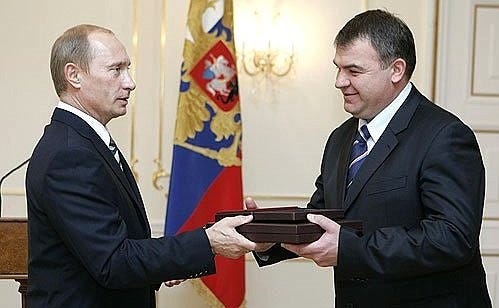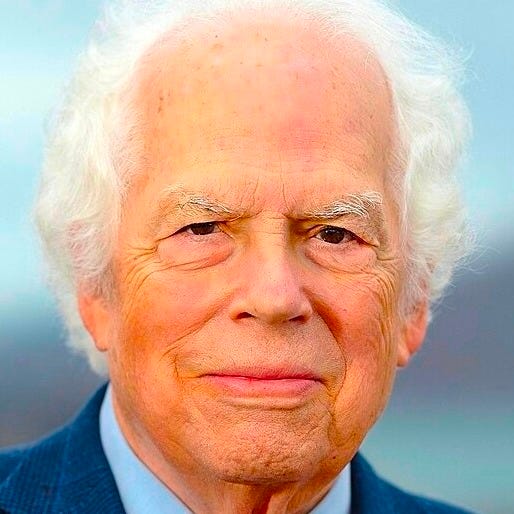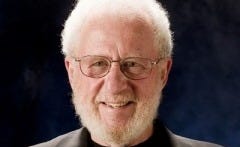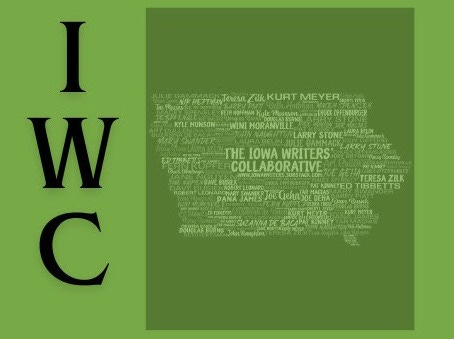Two Nobel Prize winners and a Russian Spy -- all with roots in the same Iowa community
The stories of three men who changed the world
This is the second and final part of this story. The introduction of these men and their ancestors in Sioux City, and the story of how so many Russian Jewish families came to settle in Sioux City, Iowa, appeared in Part 1 of this story, on Wednesday. https://arnoldgarson.substack.com/publish/post/158402346
Stanley B. Prusiner
Prusiner’s paternal ancestors settled in Sioux City in 1896. By 1914, his grandfather, Ben Prusiner, a department store executive, had built a fine home in an upper-middle-class neighborhood, 1722 Jackson Street. Then, in the 1920s, Ben relocated to Des Moines and worked in real estate there.
Ben and his wife had two sons, Stanley B. Prusiner, a lawyer, and Lawrence Prusiner, an architect, both in Des Moines.
Skip forward to the next generation. Stanley B. Prusiner died at age 24 of Hodgkin's disease. Lawrence and his wife had a son a few years later and named him for Lawrence’s brother; now, there would be a second Stanley B.
He would win a Nobel Prize for discovering a previously unknown cause of infection.
It should be noted at the outset that although Prusiner’s roots go back to Sioux City, he never lived there. When an interviewer made a mistake one time and asked him about Sioux City, Prusiner responded, “No, I grew up in Des Moines. I never would have lived in Sioux City.”
In any case, World War II soon uprooted the Prusiners of Des Moines. Lawrence went off to war; Stanley and his mother, Mollie, relocated to Boston, where Lawrence was in officer training school, then Cincinnati, where Mollie’s family lived. After the war, the family returned to Des Moines for a few years but ultimately ended up in Cincinnati.
During Pruisiner’s high school years in Cincinnati, he was known as “the little genius” for his scientific work on a repellent for Boxelder bugs. He also took five years of Latin in high school, an unusual choice for the time, and he became an Eagle Scout.
He found chemistry interesting in high school, and his homeroom teacher, Jake Skilken, who also taught advanced chemistry, should have been a good match. Skilken, after all, was named the best science teacher in America in 1957 by the Armed Forces Chemical Association. But something went wrong in Skilken’s relationship – or lack of relationship – with Stanley Prusiner. “He said that I wasn’t equipped to be able to do this,” Prusiner later wrote. His parents tried to change Skilken's mind, but he stood firm. So Prusiner took the regular chemistry course – and ended up tutoring half the kids in the class, who were in over their heads.
Prusiner enrolled at the University of Pennsylvania as a chemistry major after high school. He then went on to medical school at Penn and interned at the University of California, San Francisco (UCSF), followed by research at the National Institute of Health, and then back to UCSF for a residency in neurology. During this time, he met Sandy Turk, a high school mathematics teacher, and they were married in 1970. He also laid the groundwork for a career in medical research.
Early in his residency, he encountered a female patient suffering from memory loss and difficulty in performing some routine tasks. Prusiner said he was surprised to learn that she was dying of a slow-progressing virus against which her bodily defenses were not responding. It was a neurodegenerative disease called Creutzfeldt-Jakob disease (CJD) and little was known about it. Prusiner decided he wanted to change that.
“This was exceedingly interesting. . . The science was so fascinating. What was this thing? I remember thinking maybe I could come up with some better approach to treating patients like her,” he later recalled.
By 1982, his research had led to a scientific proposal that others considered heretical. At a time when there were only four known infectious agents – bacteria, viruses, fungi, and parasites – Prusiner discovered that proteins also could be infectious. They could acquire an alternative shape and coax other proteins around them to do the same. He further coined the word prion (pree-on) to describe these transformed proteins.
Years later, with Prusiner’s research continuing, it became clear that prions were the foundation of certain neurodegenerative diseases. It was the causal explanation for CJD – as well as its bovine cousin that emerged in 1986, mad-cow disease.
For this groundbreaking work, Prusiner was summoned to Stockholm in 1997 to receive the Nobel Prize for medicine/physiology from the King of Sweden.
As for Jake Skilken, Prusiner said he got a letter from a woman after he won the Nobel Prize.
“I know Skilken is in heaven and he’s applauding you and he’s really excited about you,” the letter-writer stated. To which Prusiner responded: “I’ve thought about this more than once, and I just want to make sure that you understand that nobody could have been less supporting of what I’ve done than Jake Skilken. Jake Skilken, wherever he is, cannot take any credit for anything I did.”
Prusiner has continued to work on neurodegenerative research at UCSF into his 80s.
Alan J. Heeger
The Heeger family business in Sioux City had been retail food sales for more than 30 years when Alan was born in 1936.
By this time, his parents had relocated to Akron, Iowa, a town of about 1,300, situated 45 miles north of Sioux City. Alan’s father, Peter Heeger, was managing a chain grocery store in Akron; eventually, he would open his own retail grocery store, Heeger Market.
Alan was no more than 4 years old when he – unknowingly at the time – conducted his first physics experiment on a warm spring day in front of the house in Akron where the family was living.
He had received a set of toy wood soldiers as a gift. The set had come with a miniature canon that could shoot small wood sticks toward a cluster of the soldiers, knocking them down. Not a toy that would be deemed safe for child play today, but that was then and this is now. He was playing shoot-the-soldiers-down on the sidewalk one day, and . . .
Heeger recalled the story this way: “I learned that the cannon could be tilted back so that I could vary the range. I quickly realized that by shooting from the steps rather than the surface of the sidewalk, I could significantly increase the range.
“In reality, I was learning physics – actually, I was doing experimental physics.”
Years later, Heeger was explaining the satisfaction he had received from being a scientist. The greatest pleasure, he said, has been to have an abstract idea, then do the experiment that demonstrates the idea was correct. The toy soldiers at age 4 had been “the very first time I experienced this intense pleasure. What I had thought should happen actually did happen!”
Heeger’s father, Peter, died at age 45 of heart disease. His mother was overwhelmed with her loss while trying to run the grocery store herself and care for Alan, and by then, his younger brother. She sold the store and the family home and relocated with the boys to Omaha, where her family lived.
By the time Heeger enrolled in college at the University of Nebraska in Lincoln, he had decided to pursue a career in engineering. “I had no concept that one could pursue science as a career,” he recalled. He figured it out, however, after one semester, and switched to a dual major in physics and mathematics.
He married his long-term girlfriend, Ruth Chudacoff, of Omaha, after college, and moved on to the University of California in Berkeley, heading towards a Ph.D. in physics. He worked three days a week at the Lockheed Space and Missile Division in Palo Alto, California, for a time before deciding to devote full time to his studies and research.
His Ph.D. led him to a career of research and teaching beginning as an assistant professor at the University of Pennsylvania. Within five years, at age 31, he became the youngest full professor at any of the eight Ivy League universities.
His research work, with colleagues, focused on the field of conductive polymers, especially plastics. By 1977, he and his colleagues had discovered a way to chemically modify certain plastics to increase the electrical conductivity of polyacetylene by a factor of 10 million, thus making it as conductive as some metals, according to the Encyclopedia Britannica. Ultimately, Heeger co-founded the field of semiconducting and metallic polymers. He continued teaching and research at Penn for 20 years, then moved to the University of California, Santa Barbara in 1982.
He and a research partner co-founded a business in 1990 that focused on the development of commercial products growing out of their research in semiconducting polymers. The company, UNIAX, was sold to DuPont in 2000.
And then, at 5:45 a.m. on October 10, 2000, the telephone rang in Heeger’s home in Santa Barbara. He and his wife, Ruth, were awakened. She answered the phone and reported sleepily to her husband, “There is someone on the phone from Sweden.” Alan quickly responded, “Don’t hang up.” The president of the Swedish Academy of Science was calling to give Heeger exactly 30 minutes lead time before the announcement would be made that he and two colleagues had become the Nobel Prize laureates for chemistry for the year 2000.
The lead time would need to be used wisely, to inform family and special friends of what would be happening – because, after the moment of announcement, he was warned, their telephone line would be jammed for hours, if not the entire day, with incoming calls from the news media and others.
There was one thing that immediately struck Heeger as he received the information on his award: He was a trained physicist and was a practicing physicist. But he quickly realized as he wrote later, “We are what we have become . . . I learned I had become a chemist.” In the 99-year history of Nobel Prizes to that point, it had happened only once before, in 1908, when Ernest Rutherford, a physicist, received the Nobel for chemistry with research that laid the groundwork for nuclear physics.
Like Rutherford, Heeger and his colleagues had transformed a particular niche of chemistry, demonstrating, as Heeger later wrote, “that polymers offer both the electronic/optic properties of metals and semiconductors and the processing advantages and mechanical properties of polymers.”
Heeger also is a co-founder of two biotechnology companies focused on personalized medicine and the diagnosis and cure of cancer.
George Koval
It was no accident that Abram Koval stepped foot in America for the first time on April 28, 1910, in Galveston, Texas.
The established Jews of New York, most of whom had arrived from Germany a half-century earlier, had worked hard, adapted, become successful, and in many cases, wealthy. But they worried that the seemingly endless influx of Russian Jews beginning in the 1880s might not be welcomed indefinitely by non-Jews. How many Jews in New York would be too many?
Established Jewish leaders in New York, thus led the way in creating a way to disperse incoming Jews to diverse points far to the west of New York City. A second port of entry, in addition to Ellis Island, was created in Galveston, Texas, which also offered a railroad network to many Midwestern cities. They would implement an efficient and well-organized system of placing Russian Jews in various cities throughout the Midwest.
These Jewish leaders of New York established an office in Kiev (now Kyiv) staffed by Russian recruiters, looking for young Jewish men interested in immigrating to the U.S. They wanted skilled workers who might be a good fit in the American economy. Their organization, The Jewish Immigration Society, also covered most of the cost of the trip to America.
Abram Koval was on his way to Sioux City by train within less than a week of his arrival at Galveston. Sioux City had been his pre-determined destination.
He worked hard and did good work. He and his wife, Ethel, moved into a duplex at 619 Virginia Street, sharing the residence with one of Abram’s sisters and her husband. Abram and Ethel would raise their sons there and eventually would come to own the house.

For unknown reasons, the family also would relocate to Mason City, Iowa – perhaps Abram’s carpentry work took him there – for about a year in 1914, then return to Sioux City.
Abram became a U.S. citizen in 1919, automatically extending citizenship to the entire Koval family.
George Koval attended the grand castle of a building known as Sioux City Central High School beginning in 1926. He was active in theater, the literary society, and debate. At age 15, he became an honors student and the school’s youngest graduate to that time.
Still, the Kovals began to notice changes in America and to read about changes in Russia. The changes seem to have raised questions in their minds about whether they had made the right choice in immigrating.
In Russia, the overthrow of the Romanoff dynasty and the end of Czarist rule, seemed a positive step in their former homeland. In America, the spread of the Ku Klux Klan and the rise of antisemitism likely seemed a threat for the future.
George enrolled in the College of Engineering at the University of Iowa in Iowa City after high school. He gave lectures on street corners about how Russia would be safe from the Depression that had taken hold in America because it was not connected to the world economy. In his view, capitalism was collapsing, and socialism would be the future. He became active in the Communist Party.
Meanwhile, by June 1932, Abram Koval applied for a family passport for travel in England, Poland, and Russia for the purpose of seeking employment. The house on Virginia Street already had been sold to Abram’s sister for $1.
The family returned to Russia and settled in the Jewish Autonomous Region, a self-governing Jewish spot of land in the southeast corner or Russia along the Chinese border. It is the equivalent of about seven Iowa counties of average size.
George, an electrical engineer who loved baseball, and could recite Walt Whitman and Henry Wadsworth Longfellow from memory, was soon recruited by the Soviet military intelligence service (GRU). He was trained in espionage and given a code name, Delmar. You’ll want to remember that name.
He then returned to the U.S. in 1940, and headed for New York City, where he passed himself off as a native New Yorker, an only child, and an unmarried orphan.
Although he had left a wife in Russia, he established a close relationship with at least one woman in New York. He made friends easily and took college classes.
In 1943, he was drafted into the U.S. Army.
Given his obvious intelligence, he was assigned to the Oak Ridge laboratories, where he became a health services officer, responsible for monitoring radiation levels throughout the facility where the Atomic Bomb was being created. He had full access to everything and everywhere.
About a year later, in June 1945, he was transferred to a facility at Dayton, Ohio, still as a health services officer with full access. This was where the polonium-based initiator, a key element of the A-bomb, was in production.
The U.S. dropped the atomic bomb on Hiroshima in August 1945.
The U.S. knew that Russia had begun working on an atomic bomb earlier in the war. Two months after the U.S. first used the bomb, the CIA estimated that Russia would have the bomb sometime in the range of 1950 to 1953. The Russians detonated their first atomic bomb much earlier, however, in August 1949.
How were they able to get the job done so fast?
George Koval.
His role in speeding up Russia’s development of the atomic bomb did not become known, however, until more than a half-century later.
In 2007, Vladimir Putin posthumously awarded Koval the country’s highest civilian honor, a gold medal for Hero of the Russian Federation. A Soviet newspaper reported at that time that Russia’s 1949 Atomic bomb had been “prepared to the recipe provided by military intelligence agent Delmar.”

Koval was honorably discharged from the U.S. Army in 1946. He returned to New York, where he continued his education at City College of New York. Then, as post-war America began to close in on Russian spies, he suddenly returned to Russia in 1948.
He reunited with his Russian wife and settled in Moscow, where he spent the remainder of his years teaching at the Mendeleev Chemical Institute. They had no children.
Koval died at age 92 in 2006, the only known Russian spy of the WWII era who was not caught and brought to justice by the U.S. government.
Sources for the two parts of this story include but are not limited to: Never Lose Your Nerve!, Alan J. Heeger, World Scientific Publishing Company, 2016; Sleeper Agent, Simon & Schuster, Inc., Ann Hagedorn, 2021; Tom Munson, Archives Manager, Sioux City Public Museum; A Conversation with Stanley Prusiner, Ushma S. Neill, The Journal of Clinical Investigation, July 15, 2024, cji.org; Interview with Doctor Stanley B. Prusiner by Dr. Douglas J. Lanska and Lauren E. Klarrke, American Academy of Neurology Oral History Project, A[prin 27, 2017; Stanley B. Prusiner Biographical, written by Stanley B. Prusiner, 1997, nobelprize.org; Stanley Prusiner, UCSF Profiles, www.ucsf.edu/about; City Science Teacher is Best in U.S., The Cincinnati Post, May 24, 1957; Alan J. Heeger, American Chemist, by the Editors of Encyclopaedia Britannica, Encyclopaedia Britannica; Alan Heeger, Department of Chemistry, UC Santa Barbara, www.chem.ucsb,edu/people; Alan Heeger Biographical, written by Alan Heeger, 2000, nobelprize.org; George Koval: Atomic Spy Unmasked, Michael Walsh, Smisthsonian, May 2009, www.smithsonianmag,com.
NOTE TO READERS: I write this column, Arnold Garson: Second Thoughts, as a member of the Iowa Writers’ Collaborative. You can subscribe for free. However, if you enjoy my work, please consider showing your support by becoming a paid subscriber at the level that feels right for you. Click on the Subscribe button here. Pricing begins at less than $2 per column.
Iowa Writers Collaborative Roundup
Linking readers and professional writers who care about Iowa.







Thanks as always for your interesting research!
Fascinating stories! I gotta think these times will make it MUCH easier for our enemies to recruit spies.